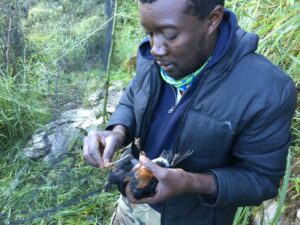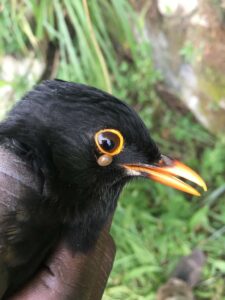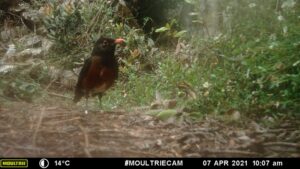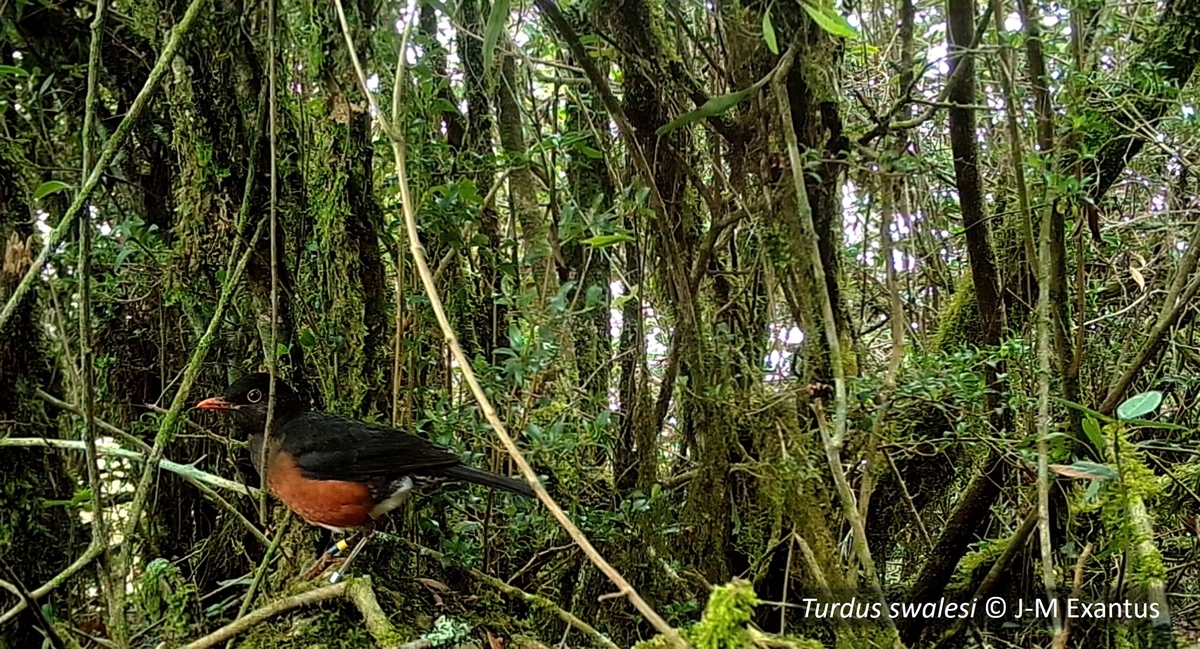Birds of tropical forests are among the most threatened in the world, especially species with restricted ranges like the La Selle Thrush (Turdus swalesi). Currently considered vulnerable, this species is endemic to the island of Hispaniola. Exposed to numerous threats, including deforestation and the presence of invasive exotic predator species, the species has experienced a significant decline in abundance and distribution. Despite its vulnerability, knowledge about the La Selle Thrush remains limited. Two scientific publications provide crucial data on the species.
The La Selle Thrush is not only endemic to a single Caribbean Island; its distribution is confined to three mountain ranges in Haiti and the Dominican Republic. Once relatively abundant four decades ago, a marked decline in its abundance and distribution has been observed, likely due to deforestation. The various consequences of deforestation, a phenomenon particularly severe in Haiti, are not well understood, including on the behavioral ecology and biology of the species. A better knowledge of the La Selle Thrush is essential to reverse the observed demographic trend and ensure the species’ long-term survival.

Jean-Marry handling a La Selle Thrush captured with a net
This is why Jean-Marry Exantus, recently awarded with a doctoral degree from the Université des Antilles, dedicated a significant portion of his research on Haitian avifauna to this species. Despite challenging field conditions, his work has revealed several unknown and unique aspects of the ecology of this culturally significant species.
The study, conducted from December 2019 to January 2022, utilized various monitoring methods. Nets were regularly set up at the Tête Opaque study site within La Visite National Park. Captured individuals were measured and weighed. As the species does not exhibit obvious sexual dimorphism, feathers and/or blood were collected for genetic determination of individual sex. Additionally, birds were fitted with colored rings for subsequent identification during binocular observations or through the use of camera traps.
Deforestation has consequences for the species’ feeding ecology
In the first scientific article recently published in the international journal Sustainability, Jean-Marry focused on the feeding ecology of the La Selle Thrush. The results reveal that the species forages on the ground in deciduous forests throughout the day. Feeding also occurs frequently in fallow lands used for livestock grazing, mainly in the early morning and late afternoon. In these areas, birds exploit insects flushed by the livestock or found around dung. This original finding demonstrates the species’ ability to opportunistically exploit deforested areas.

A tick attached to a La Selle Thrush © J.-M. Exantus
However, the article indicates the presence of ticks on 13 out of the 79 captured individuals, representing a prevalence of over 16%. This result, seemingly ordinary at first glance, becomes intriguing when compared to other bird species captured during the study. Indeed, out of over 2000 individuals belonging to no fewer than 29 different species, no tick infections were observed. According to the article’s authors, the presence of ticks on the La Selle Thrush could be directly linked to foraging in grazing lands. The adoption of new food sources in response to deforestation is not without consequences. Further studies will be necessary to assess any potential cost on survival or identify the presence of tick-transmitted pathogens. In the current study, several ticks have been collected and are undergoing analysis to identify their species and determine if they carry pathogens.
The study also allowed for the first-time estimation of adult survival rates, notably through the monitoring of banded individuals. Overall adult survival appears low compared to closely related species. However, the authors emphasize the impossibility, at this stage, of distinguishing between mortality and dispersal: individuals banded but never seen again may have moved to other territories, an emigration that could be due to human-induced disturbances in the study area.
Sex Ratio and Sexual Dimorphism

Photo taken with a camera trap © J.-M. Exantus
In a second scientific article, Jean-Marry Exantus focused on the sex ratio and sexual dimorphism of the species. Genetic analysis of feather and blood samples allowed for the identification of the sex of captured individuals. Out of 65 individuals, 45 were identified as males, and 20 as females, indicating a significantly biased sex ratio towards males. Survival analyses (from the first study) did not reveal differences in survival between males and females. Detailed elements provided by the authors, however, suggest a potentially higher dispersal of females outside the breeding season, while males tend to remain in their territories.
Another result of the study challenges the notion that the species is generally considered monomorphic. Measurements of individuals with identified sexes revealed subtle but significant sexual dimorphism. Although size and weight overlap widely between males and females, a subtle yet meaningful size dimorphism was highlighted, particularly with a greater length of tail feathers in males.
Conclusion and Perspectives
This extensive study provides new and complementary insights into the species, shedding light on the potential consequences of deforestation for the ecology and demography of the La Selle Thrush. These findings offer crucial pathways for its conservation in Haiti. Overall, various parameters, including sexual dimorphism, spatial and temporal distribution of feeding activities, prevalence of ectoparasite infections, and adult survival rates, have been evaluated in this groundbreaking study.
The methods employed in the study also serve as an example. Firstly, the study demonstrates that collected feathers contain sufficient DNA for genetic sexing, a reliable and less invasive method compared to blood sampling. Secondly, Jean-Marry Exantus once again proves that in-depth studies are feasible in the field in Haiti, requiring substantial capture efforts, a comprehensive tracking system using camera traps, and sufficient resources for genetic analyses.
Many bird species in Haiti remain poorly studied due to challenges in conducting on-site research, including political instability leading to a high level of insecurity, lack of local scientific expertise, limited access to equipment, and funding constraints. This study illustrates that research is still possible—a necessity and hope for the future of ornithology and bird conservation in the “Pearl of the Antilles.”
About the Author
After obtaining a master’s degree and a degree as an Agricultural Engineer specializing in natural resources and the environment, Jean-Marry Exantus embarked on his Ph.D. journey in 2018 at the Université des Antilles (Guadeloupe), supported by funding from Caribaea Initiative and the FOKAL foundation. His thesis defence in October 2023 represents a turning point in the field of conservation biology and ornithology in Haiti (learn more).
References
Exantus, J.-M., Vidal, A. & Cézilly, F. (2023). Effects of deforestation on foraging behavior, ectoparasites, and adult survival in the vulnerable La Selle Thrush, Turdus swalesi, in Haiti. Sustainability 15: 16035.
Exantus, J.-M., Bezault, E., Cambrone, C. & Cézilly, F. (2024). Estimation of adult sex ratio and size-related sexual dimorphism based on molecular sex determination in the vulnerable La Selle thrush, Turdus swalesi. Animals 14: 842.


